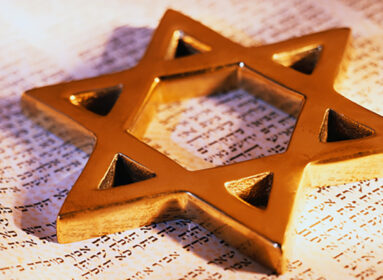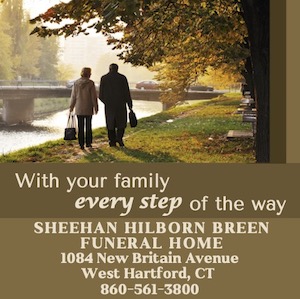By Rabbi Tzvi Hersh Weinreb
My grandfather, Max Hartman, came to America at the turn of the 20th century but remained totally observant of all Jewish religious practices. He eventually started his own business and scrupulously kept it closed on the Sabbath and Jewish festivals throughout the difficult years of the Great Depression and the Second World War. He was one of the founders of a synagogue that was one of the few in pre-war United States that required total adherence to Sabbath observance of its members.
His Hebrew name was Mordechai, and in my eulogy for him I compared him to the biblical Mordechai. I applied to him a verse in the scroll of Esther, soon to be read in the synagogue on the holiday of Purim: “All the king’s courtiers in the palace gate knelt and bowed down to Haman, for such was the king’s order concerning him; but Mordechai would not kneel or bow low” (Esther 3:2). Like Mordechai, my grandfather “would not kneel or bow low” to the pressures and influences of the secular society.
Long after my grandfather’s demise I found an apt metaphor for my grandfather’s firm dedication to our tradition in this week’s Torah portion, Parshat Terumah (Exodus 25:1-27:21). In Terumah, we read of the construction of the Tabernacle. We learn about its various contents, its coverings, and its walls. Of the latter, we read, “You shall make the planks for the Tabernacle of acacia wood, upright.”
Many commentators interpret every component of the Tabernacle in terms of its symbolic significance. Using this approach, the planks of the Tabernacle represent the quality of standing upright and firm, with unbending commitment to a cause. The Hebrew word for the planks is kerashim, for which the singular is keresh. The letters of the word keresh, when transposed, spell out the word sheker, falsehood or untruth. Each plank, each keresh, represents truth, which in our tradition is permanent, in contrast to falsehood, sheker, which does not last.
In that sense, my grandfather was a keresh, firm and unbending in his belief in eternal verities, and a bastion against the transient fashions of faithlessness.
We also read in this week’s Torah portion of another component of the Tabernacle, and it too has symbolic significance. The briach hatichon, the center bar, which is to be inserted “halfway up the planks and shall run from end to end” (Exodus 26:28), was what held all the planks together. What does this center bar represent metaphorically?
For this, I draw upon the homiletic insight of a different “grandfather,” namely Rabbi Shaul Taub, the Chassidic Rebbe of Modzitz, who was my wife’s paternal grandfather. In his posthumously published work, Yisa Berachah, he seeks to elucidate the cryptic statement in the ancient Aramaic Targum Yonatan, which reads, “The source of the wood for the center bar was the tree that Abraham planted in Beersheba.” “What can this possibly mean?” he asks. “What connection can there be between Abraham’s tree and this component of the tabernacle?”
To answer this, the Rebbe of Modzitz reminds us of the account in the Midrash of the consultation between the Almighty and two angels, the Angel of Truth and the Angel of Loving-kindness. The former opposed the Almighty’s plan to create man, insisting that man was full of falsehood. The latter consented to man’s creation, arguing that man was capable of great loving-kindness. Thankfully for us, the Angel of Loving-kindness prevailed.
The Rebbe expands upon the argument of the Angel of Truth. It was not man’s propensity for falsehood that troubled him, as much as it was his deceitful tendency to have falsehood masquerade in the guise of truth. The Angel of Loving-kindness was able to counter the argument of the Angel of Truth by suggesting a test by which authentic truth would be discriminated from hypocrisy; that is, from falsehood disguised as truth. That test was whether or not the truth in question led to cruelty, or led to loving-kindness. If it led to cruelty, it was not truth. Authentic truth leads only to loving-kindness.
The tree that Abraham planted in Beersheba is understood by our Sages to have been either an inn that offered hospitality to wayfarers, or an orchard that fed them and slaked their thirst. That tree was the ultimate expression of loving-kindness. The central bar that held the planks together is, from the Rebbe’s perspective, a metaphor for loving-kindness, for the force that assures that the unbending truths do not stand in the way of gentleness, sympathy, and compassion.
The essence of a Jew, whether famous like my wife’s grandfather, or a layman like my grandfather, is the ability to insert the “central bar” into the “planks.” It is the rare quality of being able to infuse unbending truths with loving-kindness. It takes a skilled spiritual artisan to place the briach hatichon betoch hakerashim, the central bar halfway up the kerashim, and running through them from end to end.
Judaism today faces this challenge: Can we not compromise the timeless truth of our tradition and still retain the traits of our forefather Abraham? The “central bar,” flexibly bending its way through the “upright plank,” symbolically assures us that the challenge can be met.
Rabbi Tzvi Hersh Weinreb is executive vice president emeritus of the Orthodox Union.








 Southern New England Jewish Ledger
Southern New England Jewish Ledger










